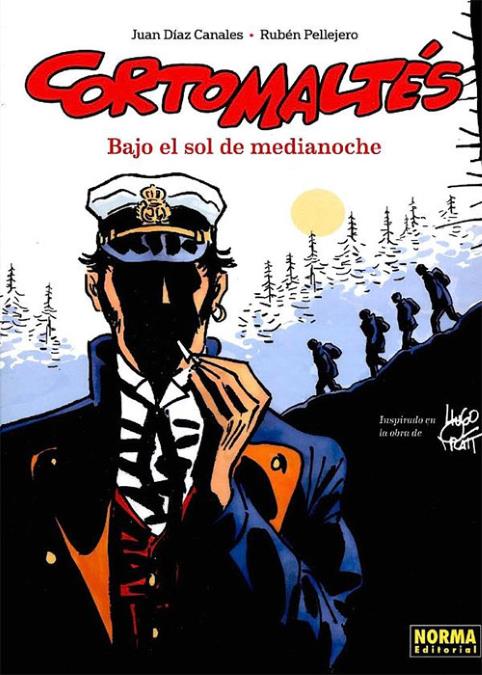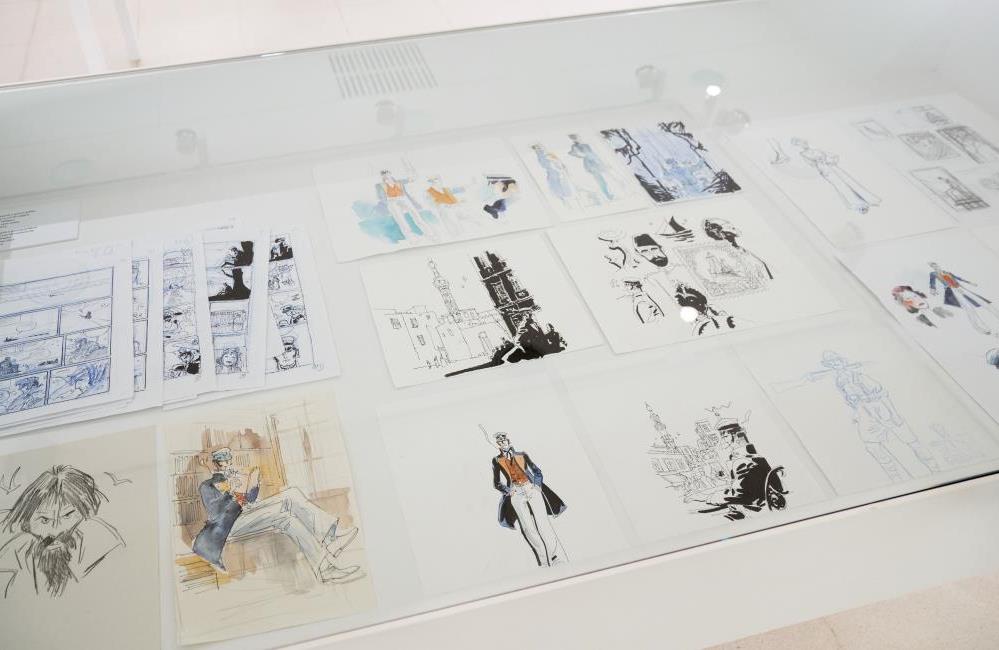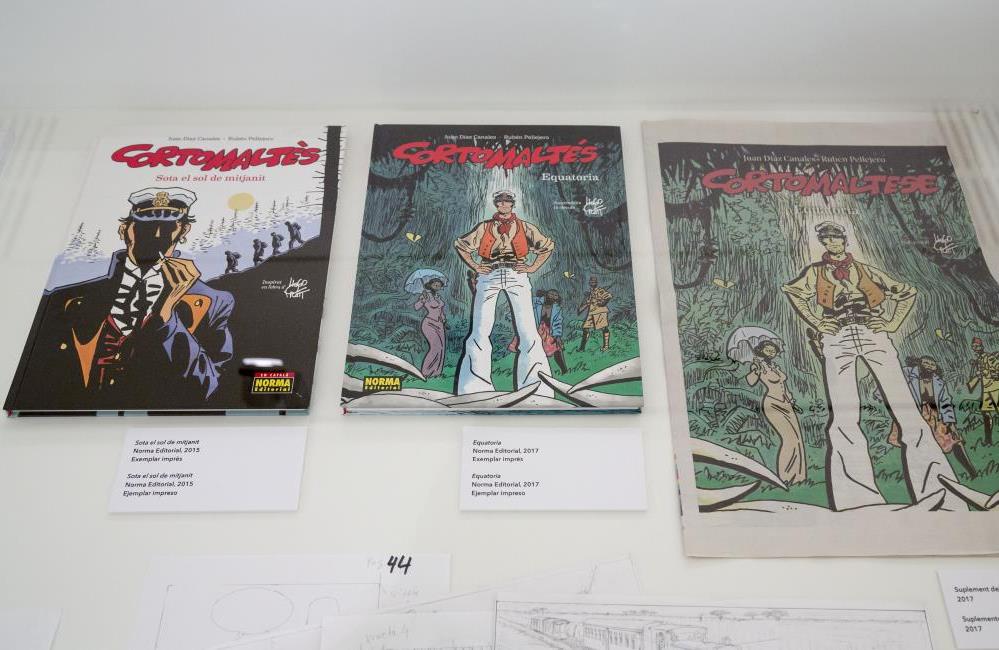Antoni Guiral
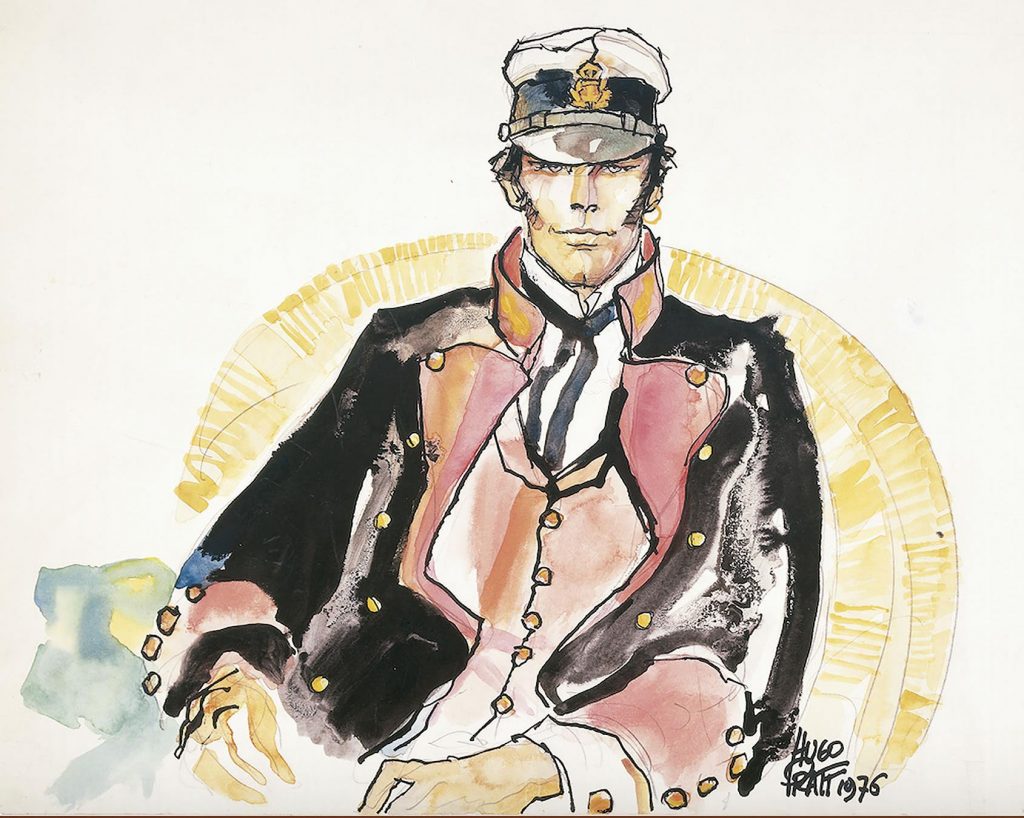
Corto Maltès, a reference of comic strips for adults
In 1967, Hugo Pratt, an Italian comic book creator with many years of experience, conceived a long format comic: The Ballad of the Sea Salt. In this work, set in the First World War, and pre-published for instalments in the Italian magazine Sgt. Kirk, an initially secondary character was born, Corto Maltès. Shortly afterwards, Pratt chose the comic strip to continue to explain new stories, and Corto Maltès would become one of the most popular characters in the history of the comic.
A great reader and illustrated man, Pratt turned the Corto Maltés into a revision of the real history of the first thirty years of the 20th century, the years which changed the world. This sailor, who travelled all over the world, found himself in the places where history took place and explained the story. The vision of Corto Maltés is that of a witness who recorded the events, but also, sometimes, he would intervene and form part of the History. With a synthetic and revolutionary graphism and with a modern and very careful narrative, Pratt turns his character into a legend.
Hugo Pratt died in 1995, leaving behind him, as well as an immense and intense work of high graphic and literary quality, a total of twenty stories of Corto Maltés.
New adventures of Corto Maltès
In 2015, Corto Maltese returned to take on new adventures. The selected authors were Spanish: Juan Díaz Canales, as a script writer, and Rubén Pellejero, as the cartoonist. Both were already recognized and respected professionals throughout the world, with a long history of work behind them.
Díaz Canales is the script writer of Blacksad, a black series saga drawn by Juanjo Guarnido of great success throughout Europe. Pellejero has for many years been notable in the French-speaking market for comics with works such as Un verano insolente (An insolent summer)orLobo de lluvia (Rain wolf).
The experience was charming but also dangerous; it was about bringing back to life a character which was very marked by the personality of its creator, Hugo Pratt. With the books Under the Midnight Sun and Equatoria, Canales and Pellejero have been able to reinterpret Corto Maltese, keeping the spirit of Hugo Pratt but contributing their personality as authors. It is, therefore, the Corto of Pratt, enriched with the personality of two great creators of vignettes.
The new adventures of Corto Maltès at the Museu Nacional d’Art de Catalunya

The exhibition The new adventures of Corto Maltés brings, for the first time to Barcelona, an example of these two books by Canales and Pellejero. A series of texts that delve into the personality of the Corto Maltès, his story and his transcendence, and explain to us the biographies of Hugo Pratt and of Juan Díaz Canales and Rubén Pellejero.
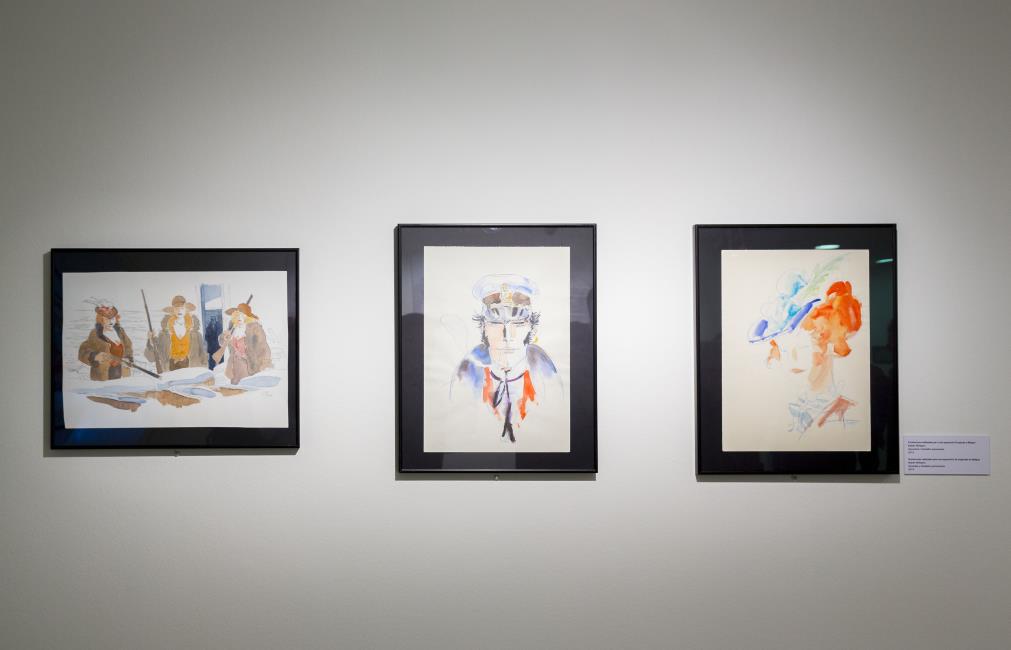
The exhibition includes a total of 21 original by Rubén Pellejero. Nine corresponding to the first book, nine of the second and three colour illustrations, in a careful selection made by the artist himself. In these originals you can see the sure brushstrokes and nuances of Pellejero, and his great capacity for staging. The originals of the books are in black and white, which allows us to enjoy the quality of the drawing and the expressiveness of the figures or the care of the scenarios. This is a unique opportunity to see these original works close to.
Complementary to this, the display cabinets show several examples of the work system of the two authors. On the one hand, we can enjoy the treatment of the scripts that the Canals did, as well as several pages with his technical scripts (corresponding to those of the original ones exhibited) and a storyboard developing the scenes. We will also be able to see examples of how the artist documented the work so as to manage to bring to life and make credible the scenes, characters and machinery of the period during which the action takes place. Furthermore, we will find many sketches of Pellejero, with studies of characters, complementary illustrations and studies of the covers of books.
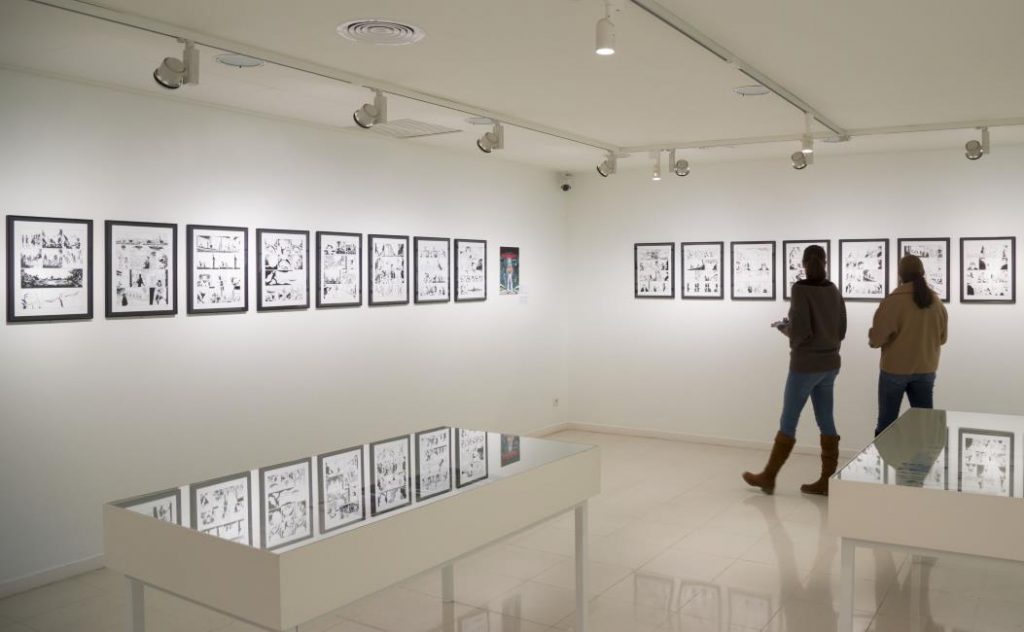
The new adventures of Corto Maltés is, therefore, an intense example of the quality of the stories that narrate the new life of this immortal character.
At the Museu Nacional until 21st April!

